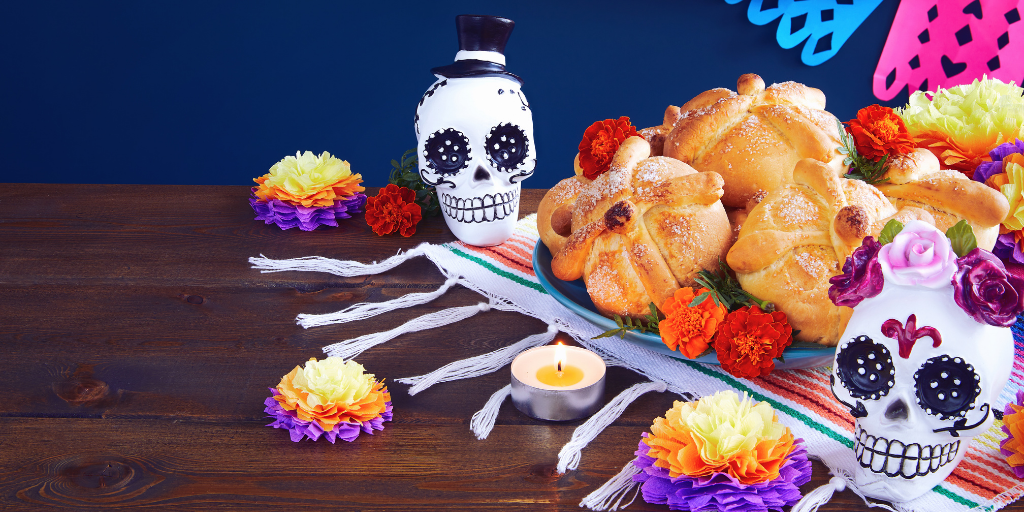
Janelle Peregoy explains how Día de los Muertos celebrates Church teaching on the Communion of Saints, and shares a prayer for the souls of the deceased.
Día de los Muertos, or "Day of the Dead," is primarily a Mexican tradition of celebrating the Catholic feasts of All Souls Day and All Saints Day. Although the celebration incorporates pre-Columbian indigenous elements, the modern Día de los Muertos is a reverent way to celebrate the Church’s teaching on the Communion of Saints and to pray for the souls of the deceased.
Unfortunately, there are some common misconceptions about the celebration that require clarification.
- Día de los Muertos is not “Mexican Halloween.” There are no ghosts, witches, and things like that. In fact, attending Mass is an essential part of the celebration.
- Some might misinterpret popular symbols of the celebration such as skeletal face make-up as glorification of death. In reality, Día de los Muertos serves as an opportunity to reflect upon the natural cycle of life and death and to assess one’s own readiness for entering into Heaven.
- It might be assumed that Día de los Muertos involves some sort of conjuring or worship of one’s deceased loved ones. To be clear, the Catechism of the Catholic Church rejects all forms of divination. Yet the Church always encourages Catholics to pray for the souls of the dead, which is a spiritual work of mercy.
- Día de los Muertos is not sad. Although many might adopt a solemn or introspective attitude at the gravesites of their loved ones, this does not ultimately diminish from the celebration of Christ conquering death and the possibility that one’s loved ones have returned to God.
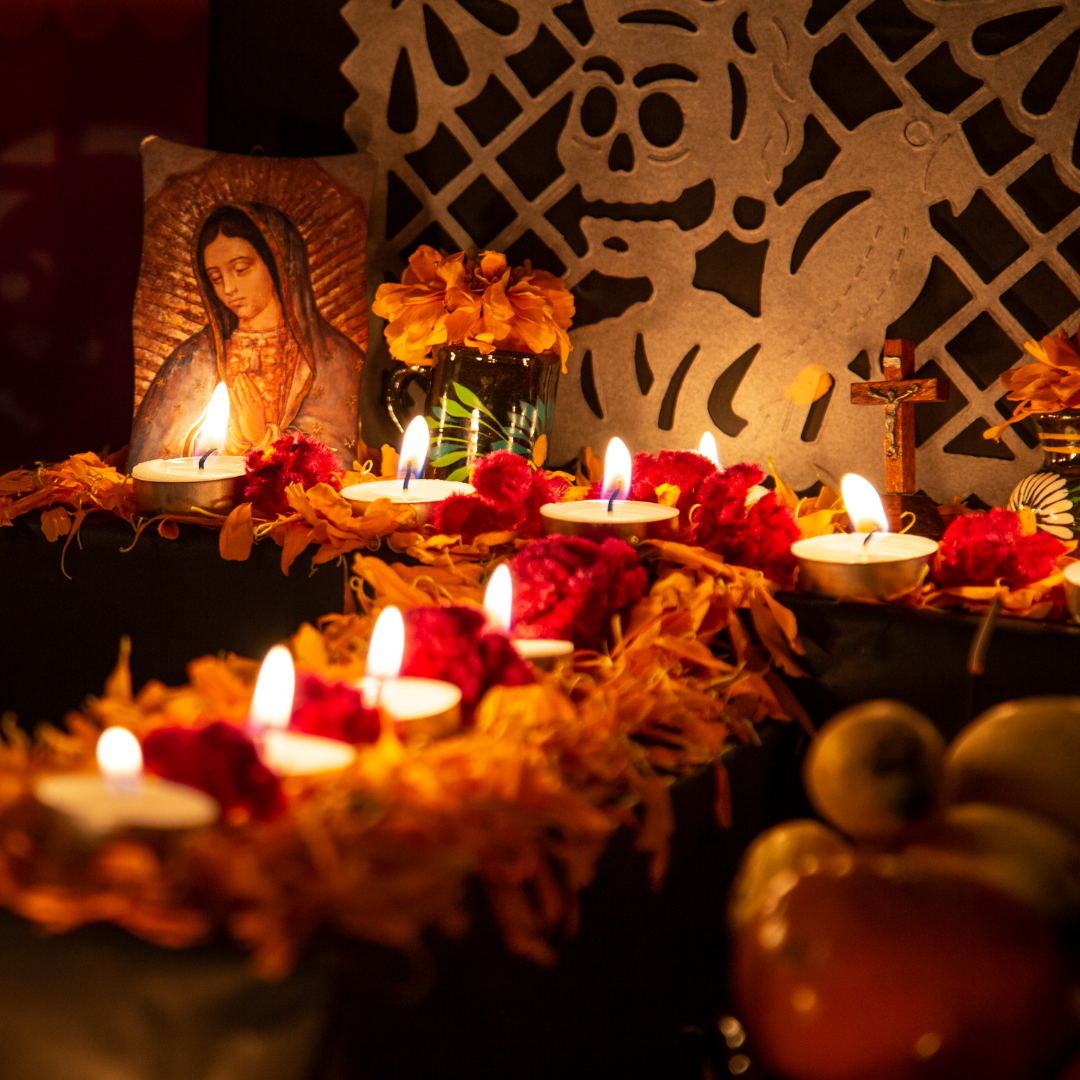
An important element of Día de los Muertos are the ofrendas (offerings) that are placed on home altars and brought to the gravesites. Here are some of the symbols associated with the ofrendas and altars.
- Many altars are created in tiers. A two-tier altar represents Heaven and earth. A three-tiered altar incorporates the first levels and also includes purgatory. Alternatively, many suggest a three-tiered altar represents the Trinity.
- Pictures, paintings, and images of deceased loved ones are places on the altar so that their souls can be prayed for and remembered. Many altars will include favorite items or mementos from those individuals.
- Spanish missionaries insisted on displaying crosses and crucifixes prominently on the altars and that tradition has persisted to this day. Many altars will also incorporate pictures of the Virgen de Guadalupe or other depictions of the Blessed Mother.
- Colorful cut tissue paper represents joy.
- Candles symbolize the light of Christ and are offered as prayers for the souls of the deceased.
- A bowl or glass of water represents a cleansing or purity of souls. It may also represent the regenerative cycle of life and death. The souls of the dead are invited to refresh themselves for their continued journey.
- Flowers, particular yellow marigolds known as cempasuchil, are spread across the altar. Their bright color is said to be a celebration of life and Christ’s conquering of death.
- Skulls, or calaveras, typically made of sugar, are a reminder that death is always present and should not be feared as long as one is in right relationship with God.
- The bread, or pan de muertos, represents the generosity of the host and a gift from the earth.
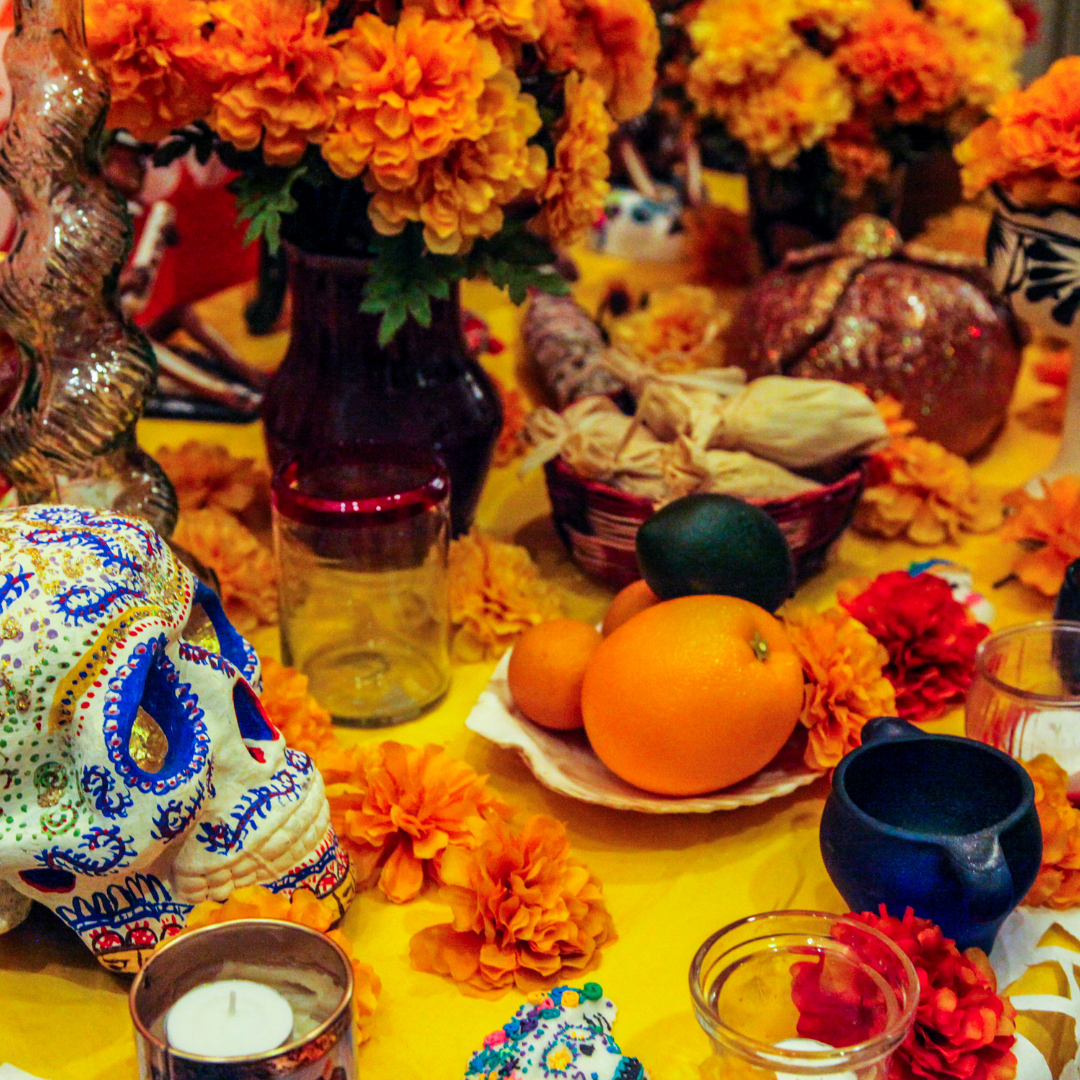
Ultimately, Día de los Muertos symbolizes Catholic teaching on the Communion of Saints. There are always different members of the Body of Christ: the ones in Heaven, the ones that are still on their way to the gates of Heaven, and us here on Earth, and we all still commune together as one Church.
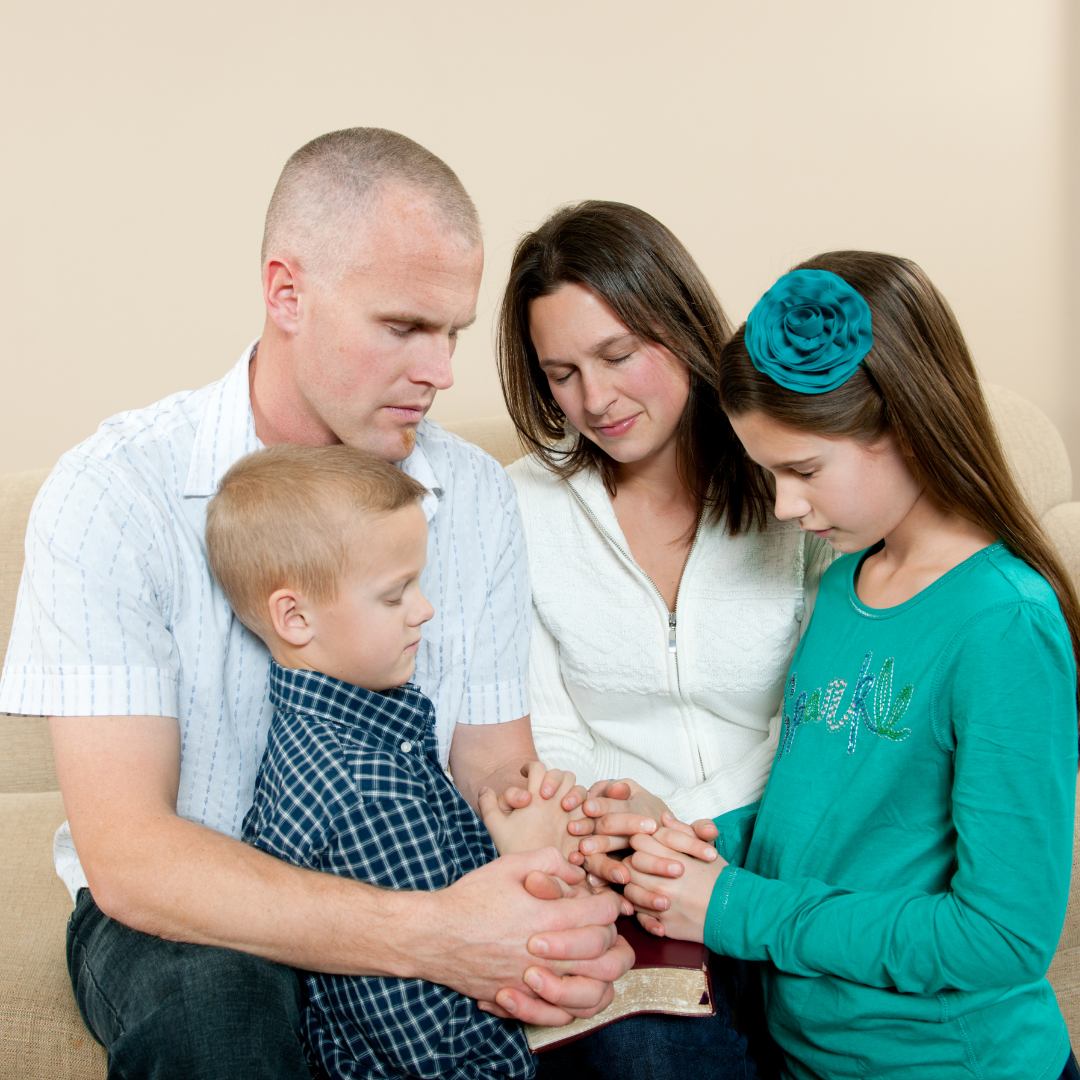
On November 2, pray this Día de los Muertos prayer with your family:
God of the living and the dead,
Today we remember our ancestors who have gone before us in death.
Their lives added to the richness of ours. Their gifts were gifts to us.Grateful for the enduring treasures of our memories and
Mindful that our love and relationships continue into the next life,
Draw us near to our ancestors in faith and love.Let us remember them with sweetness and happiness this night.
Keep from our hearts the bitterness of our parting and
Replace it with the joy of anticipating eternal life with you and all your saints. Amen.
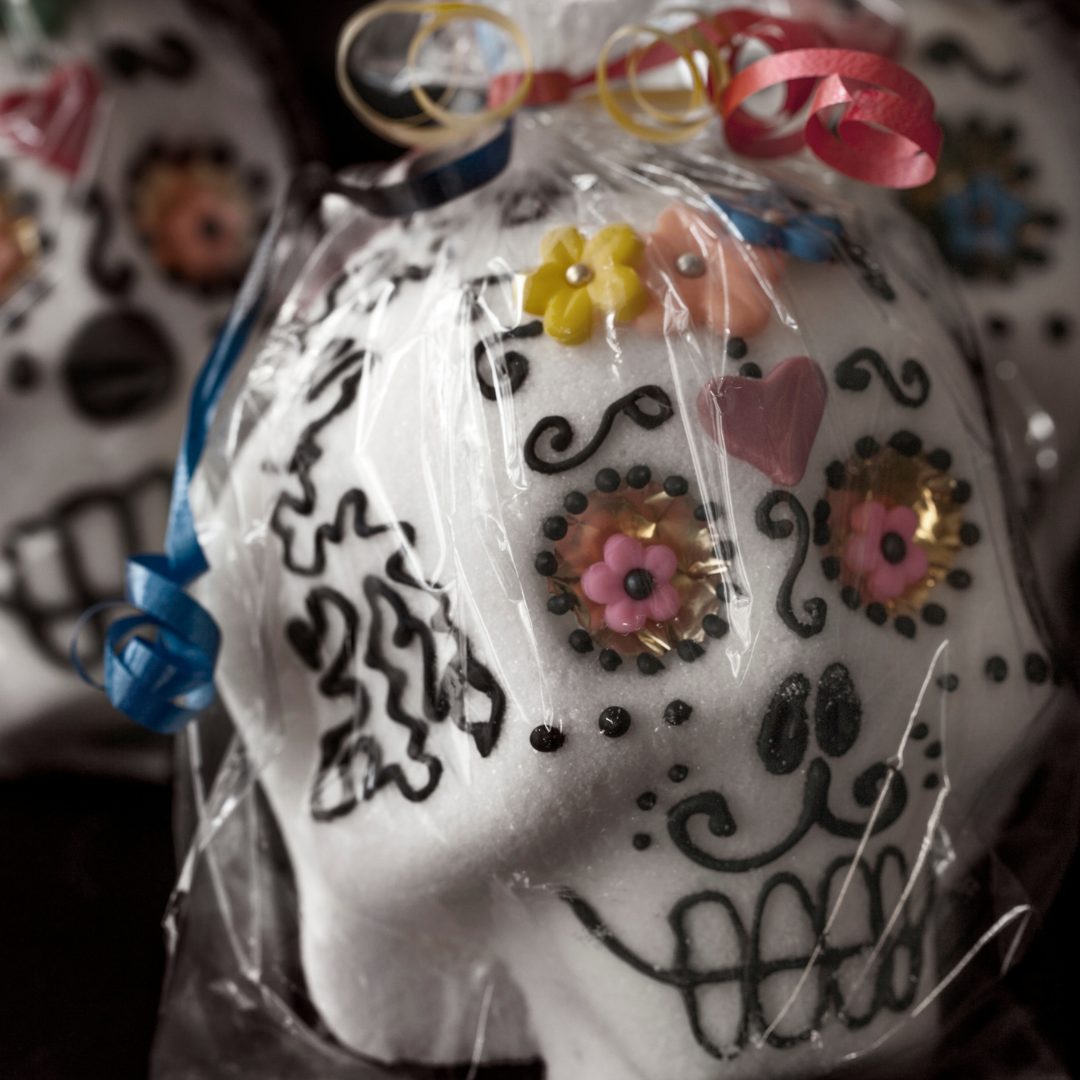
Copyright 2021 Janelle Peregoy
Images: Canva Pro
About the Author

Janelle Peregoy
Janelle Peregoy, M.Div, is an Associate Director in the Office of Family Life & Spirituality at the Diocese of San Diego. So yes, she has found one of the few positions where it is professionally acceptable to contemplate the spirituality of potty training. A Pope Francis bobble-head sits on her desk for inspiration. See more from Janelle on her blog, Faithfully Irreverent.


.png?width=1806&height=731&name=CatholicMom_hcfm_logo1_pos_871c_2728c%20(002).png)
Comments